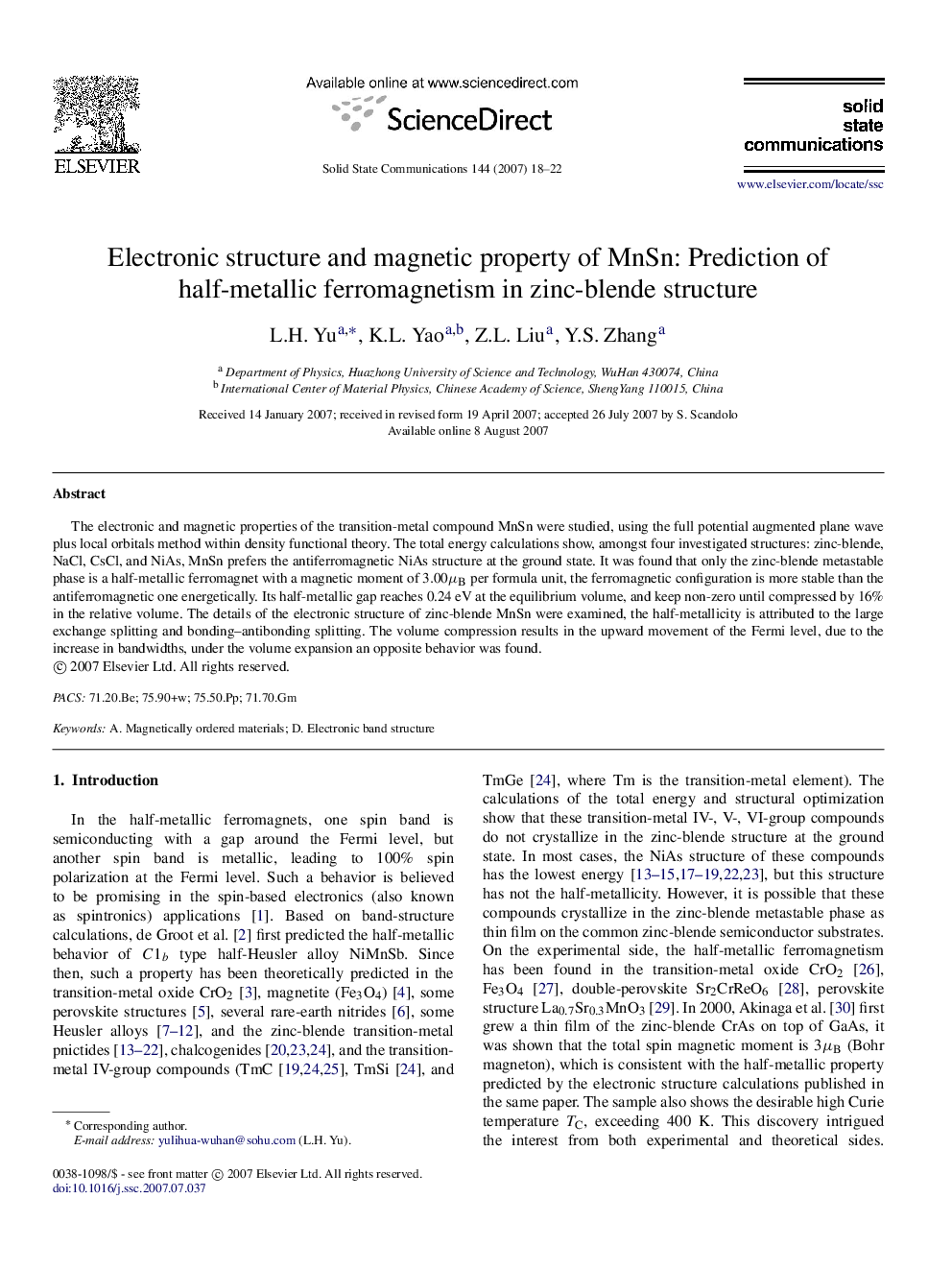| Article ID | Journal | Published Year | Pages | File Type |
|---|---|---|---|---|
| 1596677 | Solid State Communications | 2007 | 5 Pages |
Abstract
The electronic and magnetic properties of the transition-metal compound MnSn were studied, using the full potential augmented plane wave plus local orbitals method within density functional theory. The total energy calculations show, amongst four investigated structures: zinc-blende, NaCl, CsCl, and NiAs, MnSn prefers the antiferromagnetic NiAs structure at the ground state. It was found that only the zinc-blende metastable phase is a half-metallic ferromagnet with a magnetic moment of 3.00μB per formula unit, the ferromagnetic configuration is more stable than the antiferromagnetic one energetically. Its half-metallic gap reaches 0.24 eV at the equilibrium volume, and keep non-zero until compressed by 16% in the relative volume. The details of the electronic structure of zinc-blende MnSn were examined, the half-metallicity is attributed to the large exchange splitting and bonding-antibonding splitting. The volume compression results in the upward movement of the Fermi level, due to the increase in bandwidths, under the volume expansion an opposite behavior was found.
Related Topics
Physical Sciences and Engineering
Materials Science
Materials Science (General)
Authors
L.H. Yu, K.L. Yao, Z.L. Liu, Y.S. Zhang,
